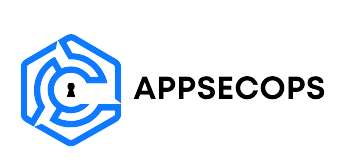Understanding AppSecOps: The Key to Secure Software Development:
In today’s digital landscape, software development practices have become more complex, faster paced, and increasingly reliant on cloud environments, microservices, and Agile methodologies. As businesses aim to deliver applications quickly and efficiently, security must remain a priority at every stage. This is where Application Security Operations (AppSecOps) plays a critical role.
AppSecOps (Application Security Operations) emerges as a solution that addresses these challenges by embedding security throughout the software development lifecycle. However, to enhance the effectiveness of AppSecOps, two key methodologies play a vital role: Risk-Based Vulnerability Management (RBVM) and Unified Vulnerability Management (UVM).
In this blog, we’ll explore what AppSecOps is, why it’s essential for the success of application security, the challenges driving its adoption, and how it differs from traditional security methods. We’ll also examine the key benefits of leveraging an AppSecOps platform and how it can transform your organization’s security strategy.
What is AppSecOps?
AppSecOps, short for Application Security Operations, refers to “Application Security at Scale”. It is a comprehensive approach that integrates security across the entire development process, from design and development to deployment and maintenance. Unlike traditional methods where security might be added as a final step, AppSecOps ensures that security is continuously woven into every stage of the SDLC.
Risk-Based Vulnerability Management (RBVM) in AppSecOps:
RBVM focuses on prioritizing vulnerabilities based on the risk they pose to the organization, rather than treating all vulnerabilities equally. This risk-centric approach ensures that critical vulnerabilities, which could lead to significant damage, are addressed first.
In an AppSecOps framework, RBVM helps development and security teams by:
- Prioritizing Security Fixes: Vulnerabilities are ranked based on factors such as exploitability, potential impact, and threat likelihood.
- Improving Resource Allocation: Teams can focus on the most critical vulnerabilities first, optimizing time and effort.
- Minimizing Downtime: By addressing the highest-risk vulnerabilities early, the chance of a major security incident is significantly reduced.
Unified Vulnerability Management (UVM) in AppSecOps:
UVM takes a holistic view of vulnerability management, integrating various security testing tools and processes into a unified system. This provides a single pane of glass to view and manage all vulnerabilities across the development pipeline. UVM enhances AppSecOps by offering:
- Comprehensive Visibility: Security teams gain a unified view of vulnerabilities from static application security testing (SAST), dynamic application security testing (DAST), and other security scans.
- Faster Remediation: By consolidating data from different tools into one dashboard, UVM enables faster identification and resolution of security issues.
- Streamlined Workflows: UVM integrates with tools like Jira, GitHub, or Jenkins, ensuring that developers and security teams work together seamlessly on addressing vulnerabilities.
How does AppSecOps work?
In an AppSecOps environment, security testing and scanning findings are continuously ingested and processed throughout the DevSecOps pipeline. The result is actionable insights in the form of prioritized findings and remediation recommendations. This allows automated security tasks and workflows to be managed and measured in real-time. Moreover, service-level agreements (SLAs) are established between security, development, and operations teams, ensuring that security tasks are handled efficiently and promptly.
Why is AppSecOps Crucial for AppSec Success?
Modern software development is characterized by its fast pace and the sheer number of components involved. Agile methodologies, DevOps practices, cloud-based deployments, and microservice architectures all contribute to the growing complexity of applications. The speed of development, coupled with the rise of open-source adoption, makes the security landscape more difficult to manage.
AppSecOps provides a scalable solution by integrating security testing, automation, and monitoring into the development pipeline, enabling teams to identify and mitigate security risks without slowing down the process.
The Challenges Driving the Need for AppSecOps:
- Increased Complexity: The complexity of modern software, combined with rapid innovation cycles, makes it harder to identify and address security risks.
- Limited Security Resources: In many organizations, security teams are outnumbered by developers, often by a ratio as high as 100:1. This imbalance leaves security teams overburdened, with many vulnerabilities going unaddressed.
- Fragmented Security Practices: Traditional security tools and methods are often siloed, requiring manual intervention and slowing down the workflow.
With AppSecOps, organizations can overcome these challenges by creating a unified security framework that integrates people, processes, and technology.
Key Benefits of AppSecOps:
AppSecOps offers several key benefits that make it indispensable for organizations looking to scale their security practices:
1. Proactive Security Integration:
In AppSecOps, security is embedded into the core of the development process. This proactive approach ensures that vulnerabilities are identified and addressed early in the development cycle, reducing the risk of security breaches.
2. Enhanced Collaboration:
AppSecOps fosters greater collaboration between security, development, and operations teams. By working together and sharing responsibilities, these teams can streamline workflows and resolve security issues faster.
3. Automated Workflows:
Automation plays a critical role in AppSecOps. Security tasks such as testing, monitoring, and compliance checks are automated, reducing manual effort and improving the overall efficiency of the security process.
4. Continual Compliance:
With AppSecOps, compliance checks are conducted continuously throughout the development process, ensuring that applications always adhere to the latest security and regulatory standards.
5. Improved Application Performance:
By addressing security concerns early on, AppSecOps helps create applications that are not only secure but also high performing. This reduces the attack surface exposed to potential threats, ensuring that applications function efficiently and safely.
How is AppSecOps Different from Traditional Security Approaches?
You may be wondering, “Aren’t we already doing this?” In some cases, you might be partially right. Many organizations have implemented traditional security practices such as vulnerability management, compliance, and security posture management. However, AppSecOps takes these practices further.
AppSecOps goes beyond traditional methods by incorporating:
- Automation of Vulnerabilities and Workflow Management: Automating workflows and managing security tasks ensures that vulnerabilities are continuously addressed without manual intervention.
- Data Integration from Security Tools: AppSecOps integrates data from various security testing and scanning tools, including SAST, DAST, and others. This data is processed within the DevSecOps pipeline to deliver actionable insights.
- Automated SLAs: SLAs between development, security, and operations teams ensure that security tasks are handled efficiently, minimizing delays and bottlenecks.
Why Do You Need an AppSecOps Platform?
Scaling application security across the entire organization can be a daunting task, but an AppSecOps platform provides the tools necessary to make it a reality. The benefits of adopting such a platform include:
Continuous Visibility:
AppSecOps platforms provide continuous visibility into security, vulnerability, and compliance, allowing organizations to reduce their exposure to risks and potential losses.
Operational Efficiency:
By automating security tasks and processes, AppSecOps platforms improve operational efficiency across security, development, and operations teams.
Faster, More Secure Application Delivery:
With automation and streamlined workflows, developers can deliver more secure applications faster, all without significantly increasing team size, training, or tool requirements.
What Does an AppSecOps Platform Look Like?
An AppSecOps platform integrates with numerous tools and services, including:
- Security Testing Tools: SAST, DAST, RASP, pen-testing tools, vulnerability scanners, bug bounty platforms.
- DevSecOps Pipeline Tools: GitHub, GitLab, Jenkins, Harness, and other continuous integration/continuous delivery (CI/CD) tools.
- Communication Systems: Slack, Jira, and other ticketing systems to ensure efficient communication and tracking of security tasks.
- Threat Intelligence and Databases: Integration with NIST, threat modeling tools, and security databases to provide actionable threat intelligence.
Conclusion Empower Your Teams with AppSecOps:
AppSecOps is not just a set of security practices; it’s a transformational approach to security that enables organizations to scale their application security operations without compromising on speed or quality. By integrating security directly into the DevSecOps pipeline, AppSecOps empowers teams to deliver secure, high-performance applications at scale. Even in the face of limited resources, organizations can leverage an AppSecOps platform to ensure their security teams focus on critical issues and enhance the overall security posture of their applications.
Visit us at AppSecOps to learn how we can support your AppSecOps journey and improve your organization’s application security. We provide a comprehensive platform that integrates visibility, automation, and actionable insights to keep your applications secure at every stage of development. Let us help you take control of your application security today.











